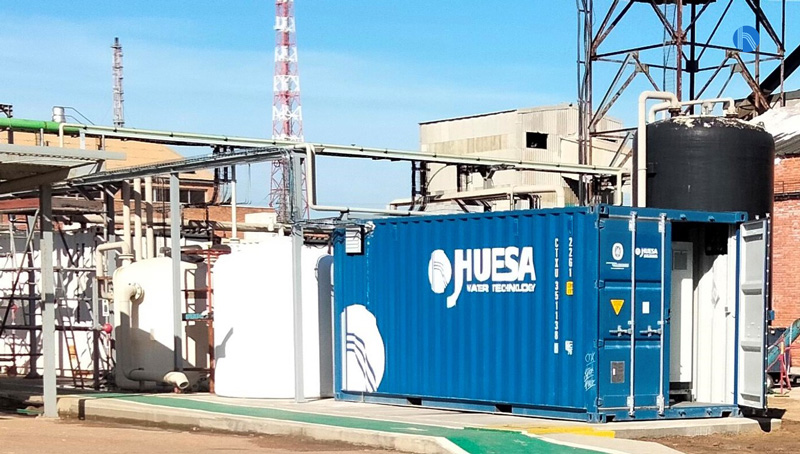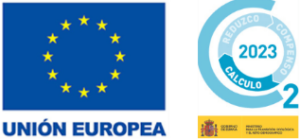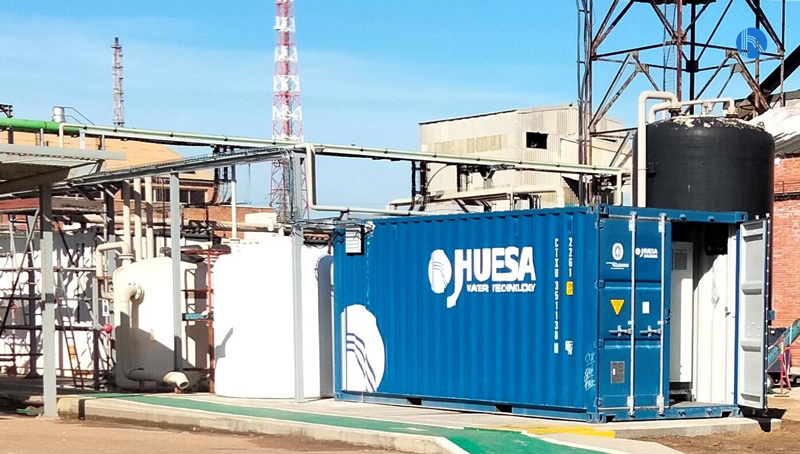
On this occasion we share with you the participation of J. Huesa in a circular economy project for a leading multinational in the manufacture of chemical products that uses ultra pure water in its manufacturing centre in the production process of its chemicals.
In its production process it is necessary to use demineralised water which, in this case, is obtained through a Water Treatment Plant (WTP) consisting of two water production lines, each of which is equipped with ultrafiltration equipment followed by reverse osmosis and EDI equipment.
En su proceso productivo es necesario emplear agua desmineralizada que, en el caso que nos ocupa, se obtiene a través de una Planta de Tratamiento de Agua (PTA) compuesta por dos líneas de producción de agua que están provistas, cada una de ellas, por un equipo de ultrafiltración seguida de una ósmosis inversa y de un equipo EDI.
Our customer, who is very committed to sustainable development, wanted to reduce water consumption, and was therefore looking for a more environmentally friendly production method. Since the high CO2 content of the EDI reject made its direct introduction into the reverse osmosis process unfeasible, it was necessary to install a water degassing plant to recover the rejects from the two EDI stacks, storing them in the ultrafiltered water tank located at the inlet of the reverse osmosis plant.
Once the requirements of our client and the extensive experience of our company’s technical team in the sector were known, J. Huesa presented its best technical-economic proposal, consisting of the customised manufacture, supply, installation, and commissioning of a containerised degasification plant with a production capacity of 11.4 m3/hour.
Water data and characteristics
The aim of the installed solution is to establish a global solution for the removal of 90% of the CO2 content of a water from the rejection of an EDI system, for subsequent reuse in an ultrafiltration system.
The starting data are as follows:
| Flow to treat | 11,4 m³/h |
| Source of water to be treated | Reject EDI |
| Raw water accumulation | 6 m³ |
| Treated water accumulation | Current ultrafiltrated water tank |
Adopted solution
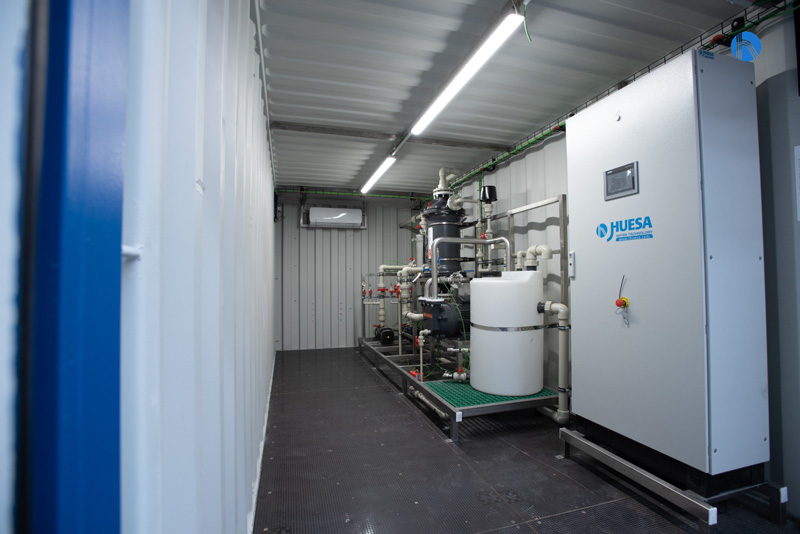
What is degassing?
Degassing is the process by which gases dissolved in water are removed. To choose the correct treatment, it must be taken into account that there are gases that dissolve in water, such as CO2, which forms calcium carbonate; the most common effect of CO2 dissolved in water is its acidification and high conductivity.
Degassing can be done by applying an atmospheric, thermal, or chemical process. It can also be done by using hydrophobic membranes that eliminate the use of chemicals.
Considering the technical objectives of the client and the general objectives of the project, the technical department of J. Huesa has opted for the use of membrane contactors that offer a clean and efficient method in the elimination of CO2, since the porosity of 0.3 microns prevents the direct contact of air – water eliminating the possibility of introducing contaminants to the water already treated by reverse osmosis.

Detail of degassing membrane preceded by a safety pre-filter
The installed system is equipped with the following elements:
- Raw water accumulation in a water accumulation tank made of GRP with a capacity of 6 m3 and installed outside the container.
- Degassing system located inside a 20-inch container equipped with the following elements:
- Air conditioning.
- Extractors.
- Electrical trays for wiring.
- Luminaires.
- The degassing system is built on an AISI-304 stainless steel skid. It is equipped with a degasification membrane pumping system with a capacity of 11.4 m3/hour, and all the instrumentation and control elements necessary for its correct operation (automatic valves, pressure switches, pressure transmitters, rotameter, among others), which are centralised in an electrical protection and control panel located in the skid itself.

Pumping system detail
The control panel also includes a programmable logic controller and a touch screen for the operation and configuration of the plant, and a router with ethernet/4G connection for the remote control of the equipment from any location. J. Huesa’s Instrumentation and Control team has designed the control panel so that it can be integrated into the client’s SCADA system.
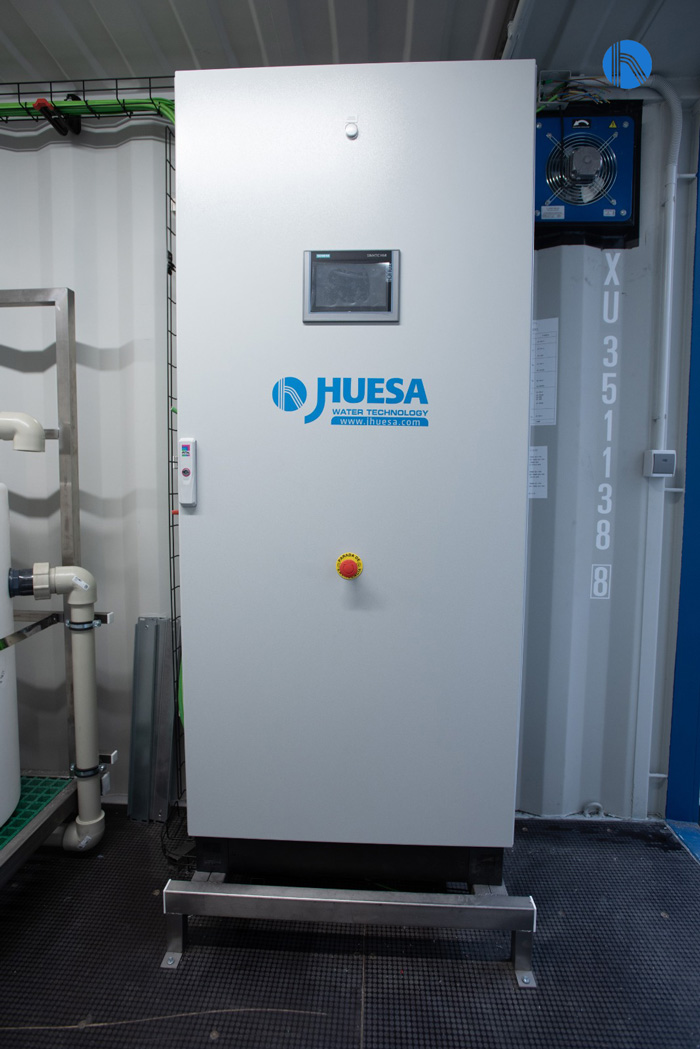
Electrical Panel Detail

